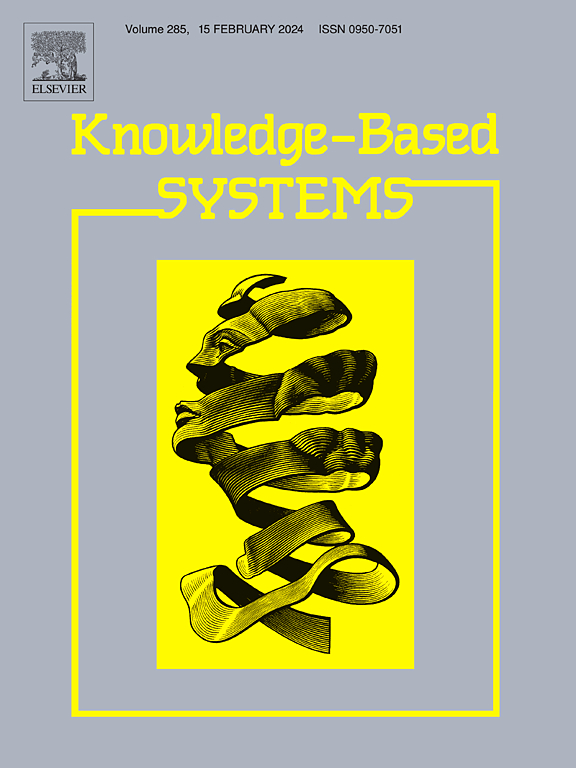FNNGM: A neural-driven fractional-derivative multivariate fusion model for interpretable real-time CPI forecasts
IF 7.2
1区 计算机科学
Q1 COMPUTER SCIENCE, ARTIFICIAL INTELLIGENCE
引用次数: 0
Abstract
Integrating models from diverse sources has attracted substantial interest in developing advanced time series forecasting technologies. However, current research lacks a comprehensive and deep fusion model to integrate multiple forecasting methodologies. To this end, this paper proposes a neural-driven fractional-derivative multivariate fusion model (FNNGM (p, n)) to assimilate the fractional-derivative dynamical system, the driving factor in grey multivariate models, and the neural network into a cohesive framework. Consequently, this fusion architecture can benefit from the synergy of the target system's dynamics, extensive exogenous information, and non-linear transformation. Additionally, FNNGM (p, n) fosters extra functionalities through its inherent memory layer and sequence decomposition, bolstering model interpretability with the visible memory mechanism and understandable model workflows. To showcase the utility of FNNGM (p, n), this paper conducts real-time monthly consumer price index (CPI) forecasts that span ten years (from 2013:08 to 2023:07), analyzing the interpretable results from FNNGM (p, n) and contrasting it against many prevailing benchmark models. The comparison results reveal FNNGM (p, n)’s highly concentrated error distributions and the minimum mean absolute percentage forecasting error (APFE), squared forecasting error (SFE), and absolute forecasting error (AFE) values of 0.22 %, 0.59, and 0.56, respectively. Furthermore, the ablation experiments are performed to explore the specific effects and compatibilities of the fusion components, validating the effectiveness of the proposed fusion approach.
FNNGM:用于可解释的实时 CPI 预测的神经驱动分数派生多元融合模型
在开发先进的时间序列预测技术时,整合不同来源的模型引起了极大的兴趣。然而,目前的研究缺乏一个全面而深入的融合模型来整合多种预测方法。为此,本文提出了一种神经驱动的分数派生多元融合模型(FNNGM (p,n)),将灰色多元模型的驱动因素--分数派生动力系统和神经网络同化到一个内聚框架中。因此,这种融合架构可以从目标系统的动力学、广泛的外源信息和非线性变换的协同作用中获益。此外,FNNGM(p, n)还通过其固有的记忆层和序列分解促进了额外的功能,通过可见的记忆机制和可理解的模型工作流增强了模型的可解释性。为展示 FNNGM (p, n) 的实用性,本文进行了为期十年(2013:08 至 2023:07)的月度消费者价格指数(CPI)实时预测,分析了 FNNGM (p, n) 的可解释性结果,并与许多主流基准模型进行了对比。对比结果显示,FNNGM (p, n) 的误差分布高度集中,绝对百分比预测误差 (APFE)、平方预测误差 (SFE) 和绝对预测误差 (AFE) 的最小均值分别为 0.22 %、0.59 和 0.56。此外,还进行了烧蚀实验,以探索融合组件的具体效果和兼容性,从而验证所建议的融合方法的有效性。
本文章由计算机程序翻译,如有差异,请以英文原文为准。
求助全文
约1分钟内获得全文
求助全文
来源期刊

Knowledge-Based Systems
工程技术-计算机:人工智能
CiteScore
14.80
自引率
12.50%
发文量
1245
审稿时长
7.8 months
期刊介绍:
Knowledge-Based Systems, an international and interdisciplinary journal in artificial intelligence, publishes original, innovative, and creative research results in the field. It focuses on knowledge-based and other artificial intelligence techniques-based systems. The journal aims to support human prediction and decision-making through data science and computation techniques, provide a balanced coverage of theory and practical study, and encourage the development and implementation of knowledge-based intelligence models, methods, systems, and software tools. Applications in business, government, education, engineering, and healthcare are emphasized.
 求助内容:
求助内容: 应助结果提醒方式:
应助结果提醒方式:


